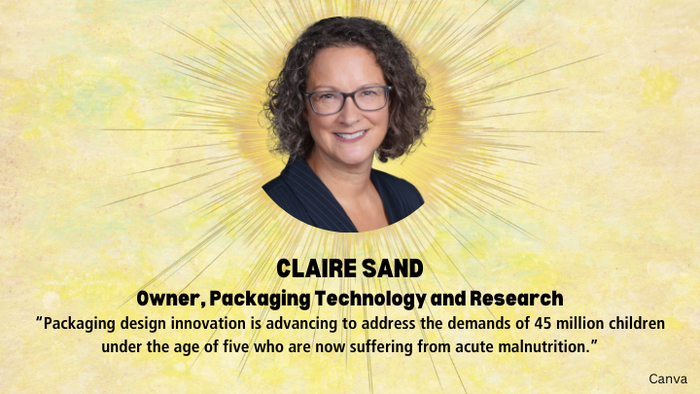Packaging Solutions to Food Security Problems
Discover how innovative packaging is paving the way for increased food accessibility and justice.
December 28, 2023

Packaging material science and design are crucial to ensuring food availability, safety, stability, and nutrition to achieve greater food security. The World Food Programme's HungerMapLive provides real-time food security statistics that change by country and region owing to conflicts, natural catastrophes, drought, war, political upheaval, and crop and labor shortages. Improving food security entails both economic access to food and food justice.
Material science and packaging design reduce food and nutrient loss while ensuring effective delivery. Food aid delivery necessitates specific packaging to avoid damage and nutrient loss. The vast supply chain for food aid necessitates 20+ human or mechanical exchanges and a variety of temperatures and humidities.

Food waste is reduced during delivery by limiting physical damage and infestation by birds, rats, and insects. For example, reusable infestation-proof laminated polypropylene woven bags include antioxidants to prevent oxidation and employ microperforated vents to efficiently “cube-out” packaging during shipping. Printed content, quick-response codes, and counterfeit-proof encoded woven polypropylene strips are interlaced to identify and prevent food fraud.
Active and high-barrier packaging solutions to food security.
Many active packaging strategies efficiently reduce nutritional, microbiological, and oxidative deterioration.
High-barrier packaging is also significant. For example, metallized PET or foil laminate pouches of ready-to-use supplementary food (RUSF) or therapeutic food (RUTF) maintain nutrients.
Packaging design innovation is advancing to address the demands of the 45 million children under the age of five who are now suffering from acute malnutrition. Patrick Webb, director of the Food Systems for Nutrition Innovation Lab, adds, "Innovative packaging solutions are critical to improving the nutritional and environmental impact of our food systems (reduced plastics, greenhouse gases, etc.). Delivering specialized food supplies to save children's lives during humanitarian disasters is critical. Costs are under control without losing quality. It's a matter of life and death."
To prevent degradation and tailor nutrients to individual populations, susceptible nutrients can be processed and packaged closer to their use. This necessitates Beta or second-stage packaging. Industrialized countries can centralize RUTF manufacturing and situate finishing operations near high-demand areas. This more closely matches nutrients and flavor profile choices to demands. With second-stage packaging, resealable bags and injection ports can be used.
Another packaging method using water chiller evaporation to preserve perishables is collapsible and reusable coolers. These cooling improvements benefit small-scale cold chain distribution by increasing crop shelf life and food supply resilience. Mobile vertical farms with trailer-sized refrigerators can mass-produce and distribute fresh food to underserved populations.
Finally, more value can be added by improving the value of post-use packaging. Packaging, for example, can be converted into diesel fuel and used to make insulation, clothes tenting, outfits, and backpacks.
Packaging may need to be reformulated before it can be used properly, and compostable or biodegradable packaging should be avoided until they have been demonstrated not to leach toxins into soil and water.
In short, packaging design and material science advancements are making it possible for a more food-secure population. And that makes it a better world for all.
About the Author(s)
You May Also Like




